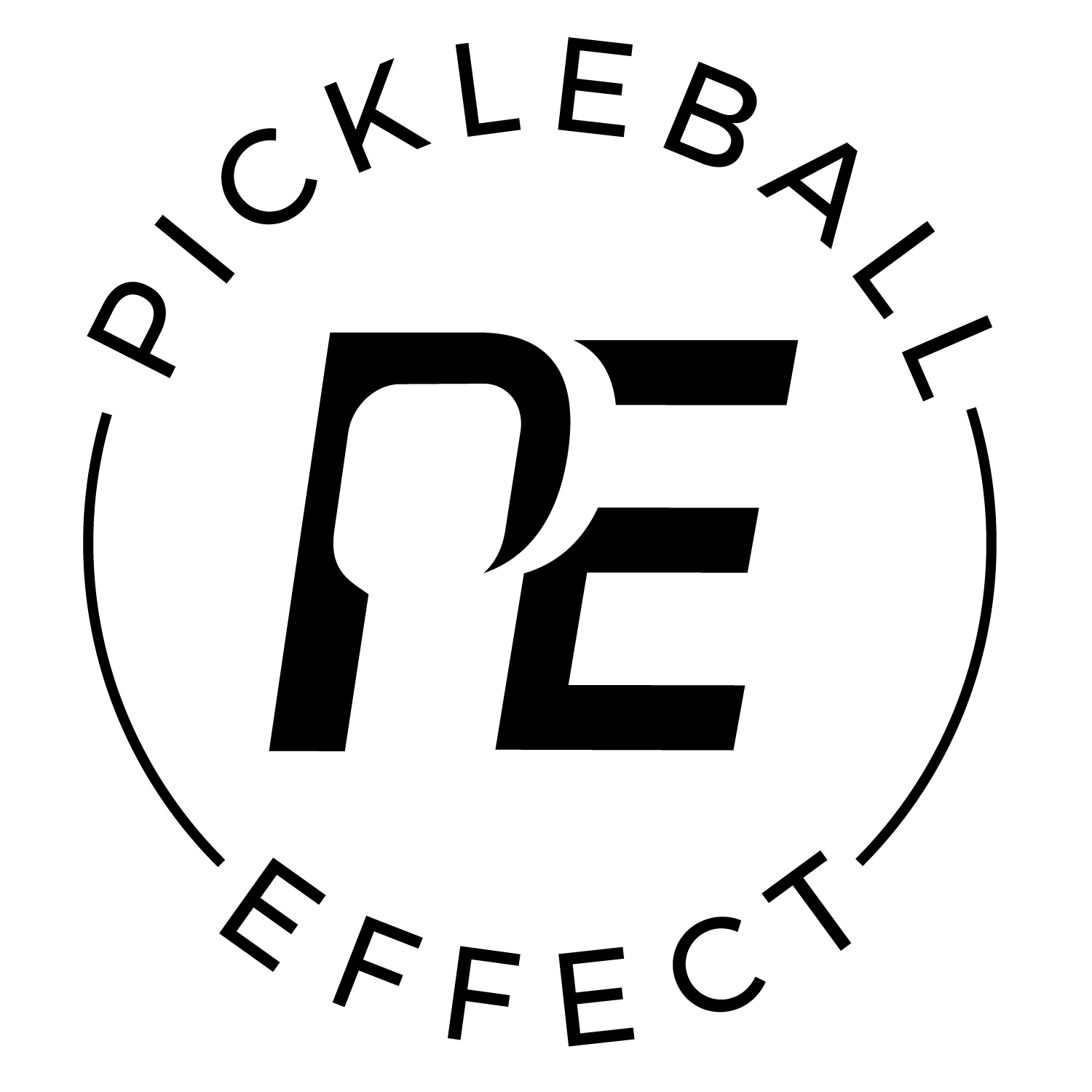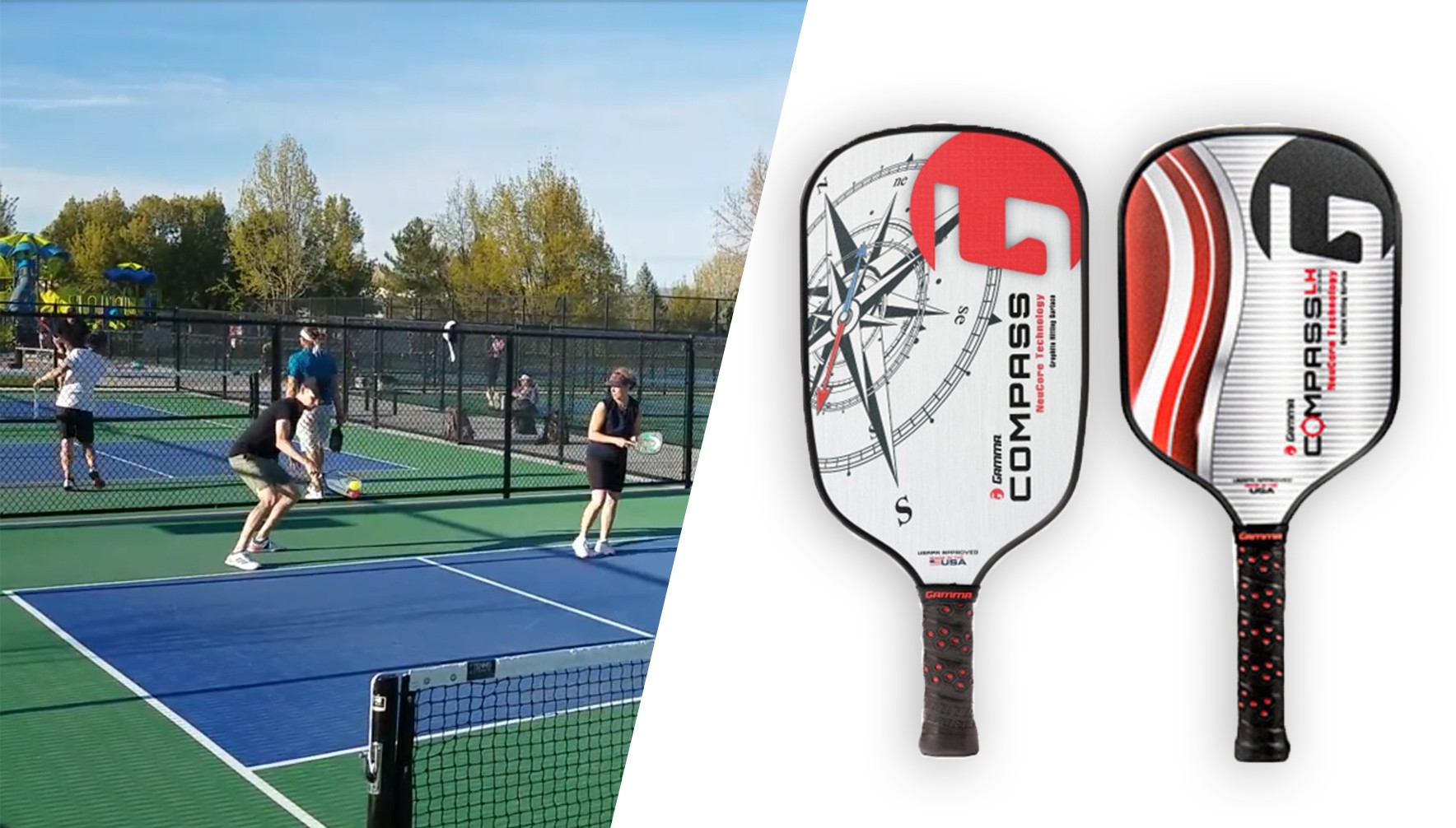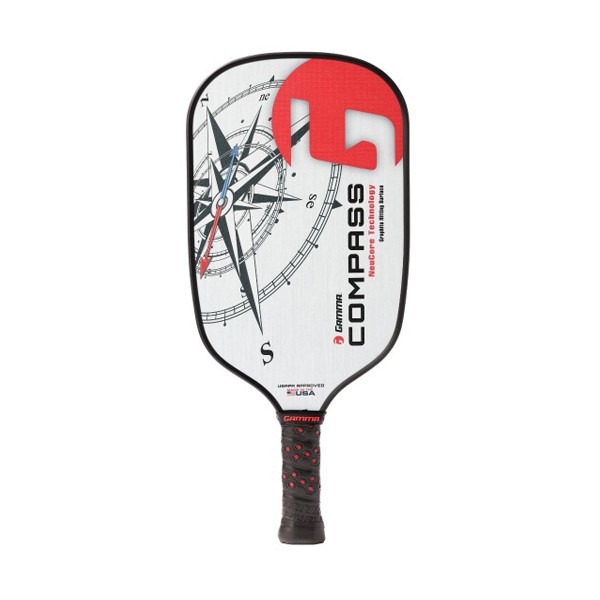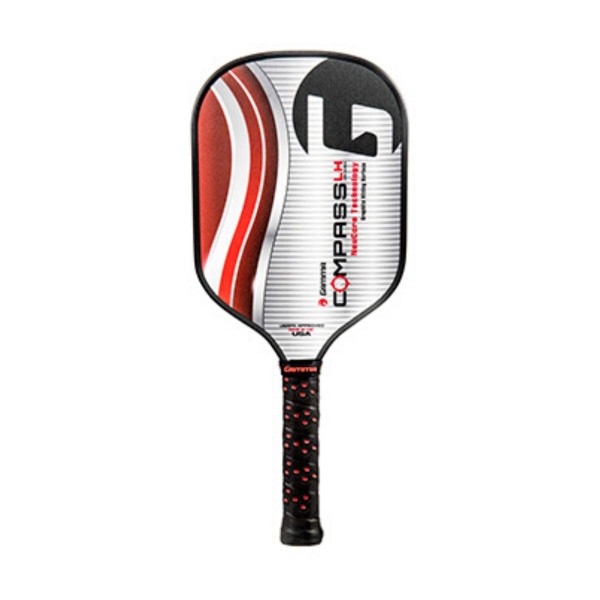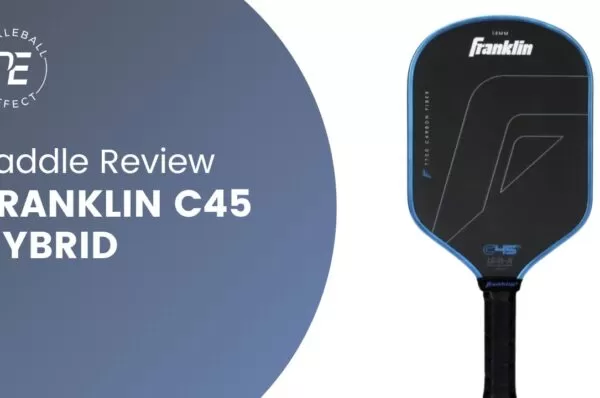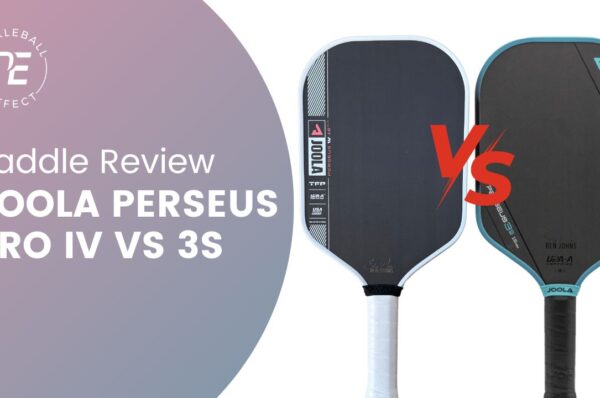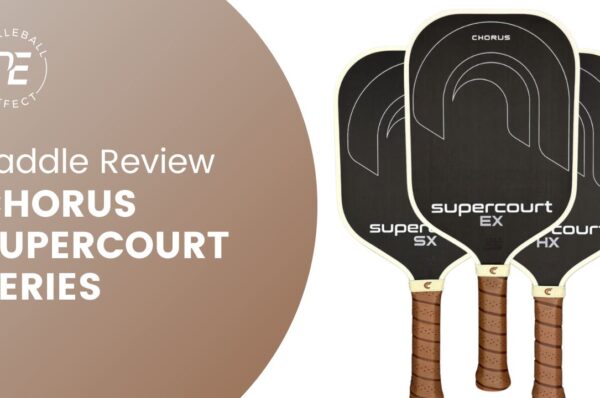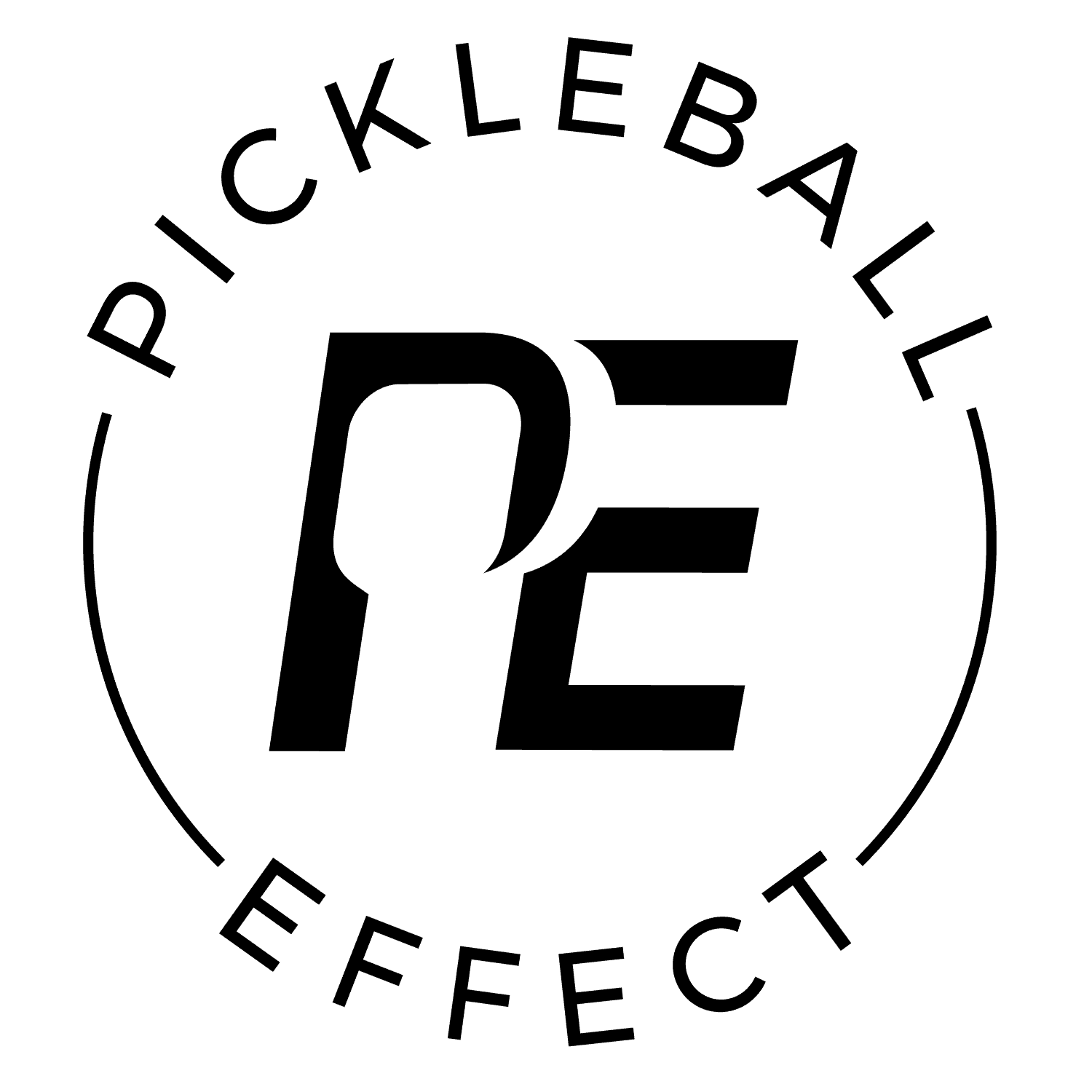Gamma Pickleball has never been a brand that simply follows trends or copies what’s on the market. Gamma’s commitment to research, development, and the everyday player is what sets them apart from a packed paddle market. Plus, I love that they are a family owned company that develops and manufactures the majority of their paddles in Pittsburg, Pennsylvania.
Two of Gamma’s most unique paddle designs are their Compass and Compass LH paddles. These specialty paddle shapes were very fun to play with and each have their own benefits and draw backs. The Compass gives you more reach than a standard elongated paddle but it didn’t sacrifice any forgiveness like I thought it might. The Compass LH has the longest handle I’ve ever played with. This made the paddle very whippy which enabled me to make shots at the net I can’t do as well with other paddles.
That’s just the start, though. After drilling and playing over 30 games with these paddles over the course of a couple of weeks, here is my review of their performance.
The Core and Paddle Design
The Compass and Compass LH play differently, but they share the same core and facing material. Each have a thick 16 mm polymer core. Gamma has developed their own polymer core they call NeuCore. NeuCore is essentially just thicker honeycomb cells. I found that their core technology gave the paddle a little more pop when compared to other thicker core paddles with similar shapes that I’ve played.
Their lightly textured graphite facing material give the paddles good control and the ability to put a good amount of spin on the ball.
Both paddles are elongated shapes that are 16 5/8 inches long. This is a little longer than the standard 16.5 inches long elongated paddle design used by most brands.
Though they are constructed the same, the big difference is the handle length. The Compass has a 4.5 inch handle length while the Compass LH has a 6.25 inch handle length.
Paddle Performance Summary
This section shares a short synopsis of each paddles’ performance to give you a general idea of how they play before I dive into the details.
Gamma Compass
If you are not a beginner player and looking for a paddle with extra reach, the Compass is a great option. It gives you more reach than a typical elongated paddle, but doesn’t sacrifice forgiveness like I thought it might. Additionally, true to gamma form, it has a great feel and touch that will enhance your soft game. The shorter handle is designed for one handed players, so if you play any two handed shots, your hands will overlap.
Gamma Compass LH
The LH is less player friendly than the Compass, but rewards good play. Its whippy nature enables you to make shots at the net you can’t do as well with other paddles. It offers great touch, and gives you a little more power compared to the Compass. I loved the paddle at moments but also got frustrated with it at times when I felt like I made unforced errors that were a result of its smaller head. If you are a higher level player that is confident in your precision, then this could be your next paddle that gives you an edge over the competition.
Shop Our Top Rated Paddles
We've reviewed a lot of paddles but we don't sell every paddle we review. Shop our selection of top rated paddles. Free shipping and returns.
Shop NowSoft Game and Defense
Let’s start by talking about the soft game. So we’re looking at dinks, drops, and blocks. True to Gamma form, I thought they both had an excellent feel to them that was easy to adjust to and execute drops and soft shots around the kitchen.
The short handle compass was more player friendly with the soft game than the LH. It had more playable surface area which led to less unforced errors compared to the LH. The LH has that small, low profile head. So sometimes with dink volleys, or blocking drives and speeds I’d catch an edge just above the handle where there usually is some paddle there. But the lower profile head had its benefits too. It was quick and whippy in your hands. Which made it easy to be aggressive with my dinks and add a little extra top spin or slice to them. The more I played with the LH the better I got with it. It was honestly weird to play with at first because the handle is so long and the paddle face is far away from your hands. It took some getting used to but after a while I really liked it and made less unforced errors as I adjusted to its smaller head.
The short handle compass has the longer and skinner head compared to normal elongated shapes, but I didn’t feel like that made the paddle any less forgiving compared to other elongated paddles that are a little wider. It’s not as forgiving as Gamma’s Hellbender, or other wider shaped paddles, but its forgiveness is on par with other performance level elongated paddles.
Attacking
Now let’s talk about attacking the ball. So we’re looking at drives, speed ups, and volleys. This is where the Compass LH shined. Its longer handle and smaller head made it really whippy and quick in your hands. I also noticed I could generate more power with the LH than I could with the Compass. I think it had something to do with its compact face and whippy nature. Its enhanced maneuverability made it easy to add topspin when I was attacking low balls and enabled me to disguise speed ups because I could wait a hair longer before I attacked. My opponents didn’t know if I was going to dink it or speed it up.
Both paddles have that lightly textured graphite facing material. It was enough texture to generate the top spin I needed to be aggressive with drives and rollovers. However, it wasn’t overly textured so it didn’t respond as much when my opponents would use spin against me, increasing my ability to control the ball when spinning balls came my way.
I usually use two hands to drive the ball, and that felt really comfortable when I did that with the LH. I could put two full hands on the handle without any overlap. It actually felt strange at first because I’ve never played a paddle with that long of a handle. It felt more like my right hand was supporting the efforts of my left hand, rather than the other way around. I even found myself using two hands more often when dropping the ball or attacking at the net.
If you don’t use any two handed shots, I don’t think you should rule out the LH. Spencer Smith, a touring pro that plays with the LH rarely uses two hands for any shot but still prefers to play with it.
The Compass was less whippy in nature and has a little less power compared to the LH, but otherwise played very similarly as the LH.
Shop Our Top Rated Paddles
We've reviewed a lot of paddles but we don't sell every paddle we review. Shop our selection of top rated paddles. Free shipping and returns.
Shop Now